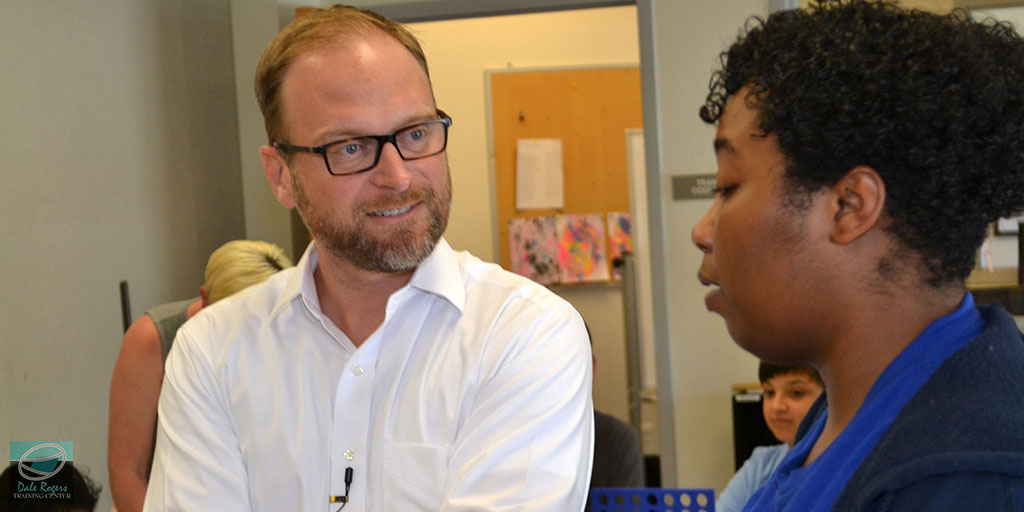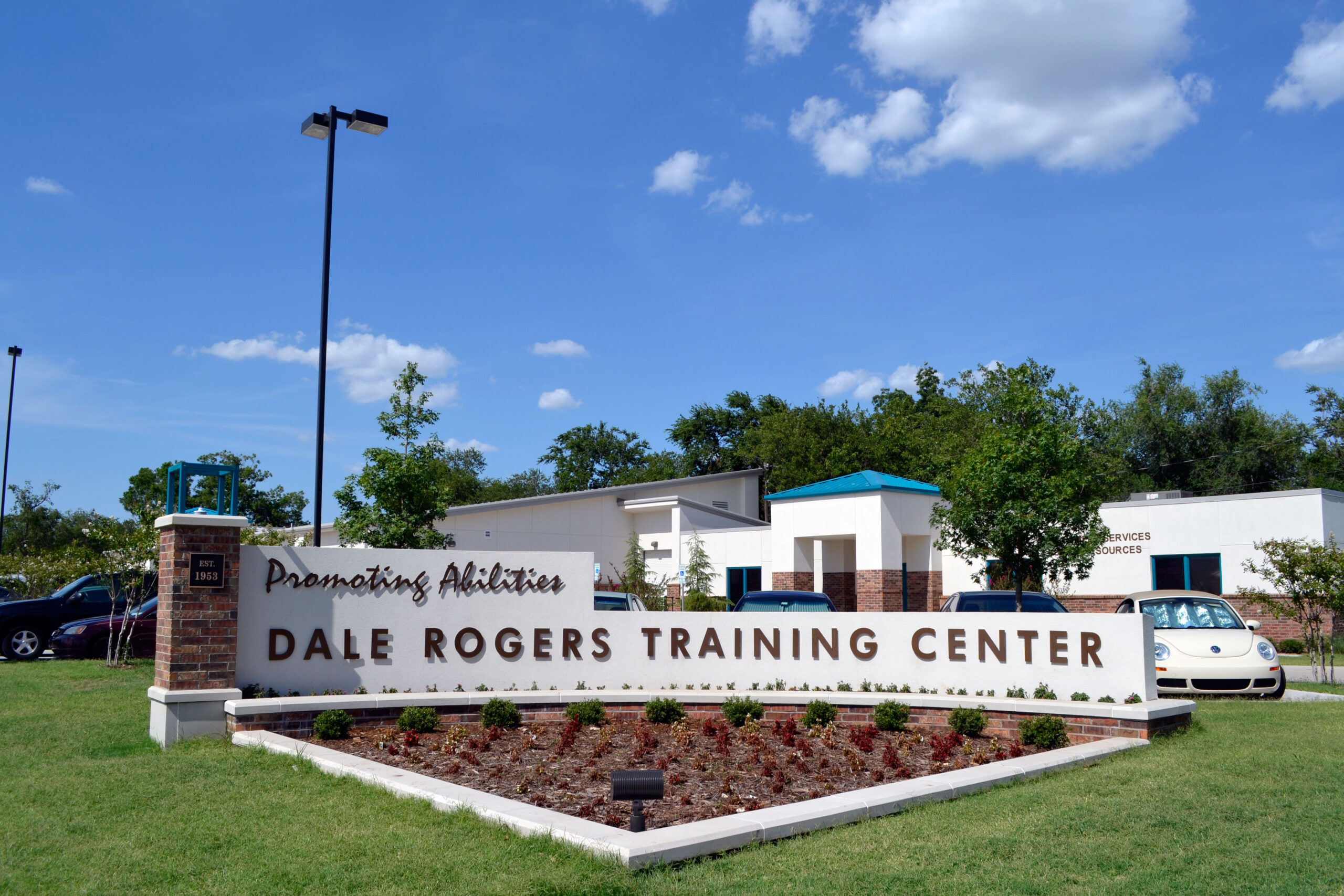New DHS Director tours DRTC

Pass through any of Dale Rogers Training Center’s work floors at DRTC Awards, DRTC Framing or our Vocational Services Program and you’ll be hard pressed to leave without 1) being impressed by the variety and quality of work; 2) hearing from people engaged in DRTC programs about the importance of their work; and 3) a smile. Oklahoma’s Director of the Department of Human Services (DHS) and a member of Governor Stitt’s Cabinet appear to be familiar with all three.

Justin Brown, who was appointed in June to lead Oklahoma’s largest state agency, along with Secretary for Human Services and Early Childhood Development Steven Buck, toured DRTC to learn about Oklahoma’s oldest and largest community vocational training and employment center for people with disabilities.
DRTC Deputy Director Deborah Copeland, M.Ed., introduced Director Brown to the nonprofit agency’s array of programs, leading the tour through DRTC’s awards and trophies, and picture framing divisions, as well as the Vocational Services Program. Many of those served by DRTC’s on campus programs receive DHS funding to come to work.
Brown recognizes the importance of a united front to serve vulnerable Oklahomans, while maintaining good relationships with community providers like DRTC.
“Building these partnerships… not just funding relationships, but relationships in which our team engages fully and really understands the challenges that those in the community face, that’s the sort of partnership we need to build together,” said Brown.

Over the course of about two hours, the DHS director visited with many people involved with DRTC programs, and saw the positive impact employment has on their lives. Brown spoke with several people in DRTC’s Vocational Services Program, learning about their individual jobs and complimented them on their work. He also participated with campers in Camp Tumbleweed, DRTC’s summer day camp.
“We’re extremely honored Director Brown and Secretary Buck chose Dale Rogers Training Center to experience a first-hand perspective of the talents and skills of people with disabilities hard at work,” said Copeland.
“He has a passion and desire to help the state deliver better services to those who depend on DHS,” Governor Stitt said.
Director Brown and Secretary Buck also visited fellow United Way partner agency YMCA of Greater Oklahoma City. Buck later tweeted on their encounters, “These organizations make outstanding contributions to our community and state. The time definitely helped inform my understanding of employment training and early childhood programs.”
“The positive impact our programs have on people leaves a lasting impact,” said Copeland. “Our folks like going to work, they’re loyal, and they’re part of our community. Inclusion of their unique abilities makes a great difference not only in their own lives, but also in the lives of others.”
Dale Rogers Training Center (DRTC) is the oldest and largest community vocational training and employment center for people with disabilities in Oklahoma. With multiple locations in Oklahoma, DRTC trains or employs approximately 1,000 people with disabilities per year. Visit us online: DRTC.org.






